Decoding online abuse in basketball and football
FIFPRO, NBPA and WNBPA team up with Signify to publish a unique study covering online abuse targeting stars of world football and basketball
A first-of-its-kind study released today reveals the disturbing levels of online abuse targeting the stars of global football and basketball.
FIFPRO, the NBPA and WNBPA have partnered with Signify Group for a unique study covering 160 players across 15 leagues in the world’s two most popular team sports.
For a full read of Signify’s ground-breaking global study of online abuse directed at Basketball and Football players - Download the FIFPRO, NBPA I WNBPA report here.
The respective player associations for world football and basketball used Signify’s specialist Threat Matrix technology to analyse over 7.3 million posts, identifying the targeted, discriminatory, abusive, and threatening messages sent to their member athletes via social media.
Analysis shows the distressing levels of racist, sexist, homophobic, and transphobic abuse faced by elite athletes from the Premier League and NBA to the Women’s Super League and WNBPA.
Previous studies by Signify have focussed on abuse in individual sports in isolation, but for the first time ever we can now highlight the grim shared experiences of football and basketball stars when interacting with fans online.
Threat Matrix analysis focussed on English-language posts on Twitter from May to September 2021 – a period that included the NBA playoffs, the conclusion of European football’s domestic seasons, and international football tournaments such as Euro 2020. Additional analysis took in other platforms (such as Instagram) and languages including Spanish, Italian, and French.
A selection of 160 athletes – 80 each from basketball and football – ensured 15 different leagues were represented across 10 countries.
Such quantities represent the equivalent of more than 17 incidents in every match round of a regular NBA season, or more than 38 incidents in a Premier League fixture weekend.
The findings show a series of interesting parallels in the nature of abuse targeting athletes across both sports.
73% of NBA players in the study received some form of targeted abuse online, while for men’s football it was 2 in 3 athletes. 72% of all abuse targeted NBA players was homophobic or racist in nature, while for men’s football that figure was 85%.
In women’s football, 90% of detected abuse was sexist or homophobic, while 4 in every 5 instances of abuse targeting WNBA stars included sexually explicit or harassing messages.
Threat Matrix analysis also further highlighted the long-standing issue of social media companies failing to act against abusive content on their platforms.
Almost 90% of detected abuse was still online three months after the end of the study. While some action was taken against racist posts (26% removed) very little was done about detected homophobia, with just 6% taken down. Very few abusive posts were removed in women’s sport, with virtually no action taken in cases of WNBA stars being targeted.
The study also highlighted seven key findings to inform FIFPRO, NBPA, and WNBPA policy in this crucial area of player welfare:
1. PLAYERS’ WELL-BEING AT RISK
Players across sports share similar risk profiles and suffer horrific online abuse in the workplace impacting mental well-being, lifestyle, and performance.
2. THE SAME ABUSIVE PATTERNS DETECTED
Online abuse follows similar tactics across sports industries and jurisdictions: e.g. homophobia is on the rise, women face sexual abuse, and racism is more event/performance-driven.
3. A SAFETY ISSUE AT WORK
Players are often targeted by followers of their own team accounts, sponsors, competition organisers and media outlets.
4. AN ATTACK ON PERSONALITIES AND THEIR IDENTITY
Online abuse creates an environment that attacks the characters and personalities of players and forces them to hide and withdraw from who they are and want to be.
5. SOLIDARITY AND SUPPORT FOR PROGRESSIVE CAUSES TRIGGERS ABUSE
Players who express solidarity for social issues almost always receive a torrent of abuse.
6. SAFETY MEASURES FOR PLAYERS ARE OFTEN MISSING
While players can be protected against online abuse, specific safety measures are often not sufficiently implemented.
7. A LACK OF MODERATION & REGULATION
A clear majority of the content detected remains online and visible to the public (87%) and exposes a lack of regulation and oversight.
The study has already informed action from FIFPRO, the NBPA and WNBPA. Thousands of tweets and accounts are being reported to social media platforms; hundreds of accounts have been deanonymised, and where appropriate, will be reported to security teams or law enforcement for review.
Image: Atlanta Dream v LA Sparks WNBA.
Creative Commons License 2.0: Steve Harwood (2532116989)


